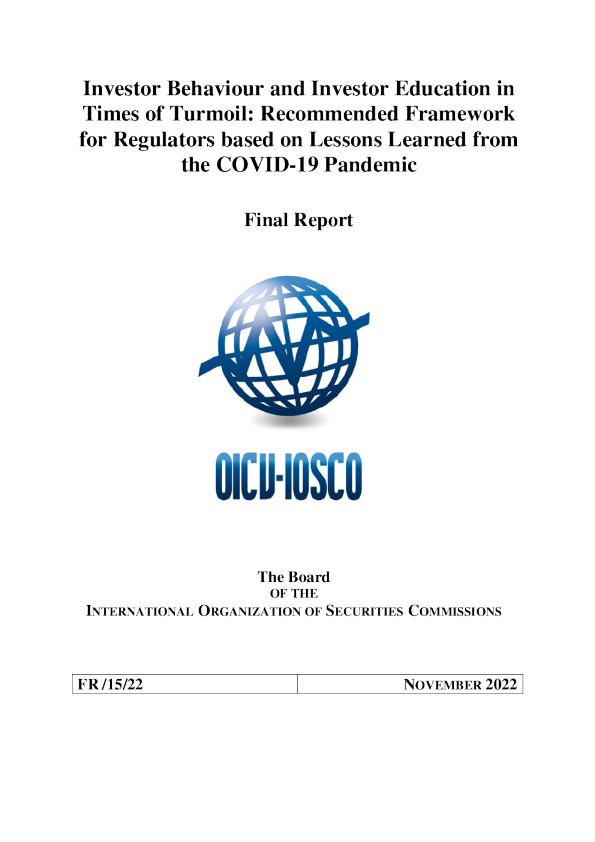Building an integrated surveillance framework for highly leveraged NBFIs – lessons from the HKMA

BISPapers No137 BuildinganintegratedsurveillanceframeworkforhighlyleveragedNBFIs–lessonsfromtheHKMA byKevinCheng,ZijunLiu,SilviaPezziniandLiangYu MonetaryandEconomicDepartment August2023 JELclassification:G01,G23,G28. Keywords:datagap,non-bankFinancialInstitutions,systemicrisk. TheviewsexpressedarethoseoftheauthorsandnotnecessarilytheviewsoftheBIS. ThispublicationisavailableontheBISwebsite(www.bis.org). ©BankforInternationalSettlements2023.Allrightsreserved.Briefexcerptsmaybereproducedortranslatedprovidedthesourceisstated. ISSN1682-7651(online) BuildinganintegratedsurveillanceframeworkforhighlyleveragedNBFIs–lessonsfromtheHKMA KevinCheng,ZijunLiu,SilviaPezziniandLiangYu Abstract Thispaperproposesanewapproachtomonitoringsystemicrisksarisingfromhighlyleveragednon-bankfinancialinstitutions(NBFIs)suchashedgefundsandfamilyoffices.Thesetypesofentitiesusuallyemployahighdegreeofleverage,withthepotentialtocreateandamplifymarketstressthroughtheirconcentratedportfoliosandinterconnectedness.Atthesametime,theyarediverseinnature,nimbleandsubjecttolittledisclosure.Assuch,much-neededeffortstoaddressNBFIrisksfromasystem-wideperspectiveareoftenimpededbydatagaps.InlightoftheongoingpolicydiscussionsontheNBFIsector,andrecentprogressincollectingmoregranularsupervisorydata,thepaperhighlightsthatmultipledatasourcescanbeintegratedinnewwaystoextractvaluableinformationandsignalsfortimelyNBFImonitoring.Inparticular,granulardatafromtraderepositoriesandfromregulatedentitiessuchasbankscanbeusedtonarrowdatagaps.BasedontheHKMA’sexperience,thepaperexplainstheanalyticalunderpinningsofbuildingasurveillanceframeworktomonitorhighlyleveragedNBFIsandsuggestspracticalstrategiesthatmightbeadoptedbyregulatorsandsupervisors. JELclassification:G01,G23,G28. Keywords:datagap,non-bankFinancialInstitutions,systemicrisk. ThispaperhasbeenpreparedbyKevinCheng(formerlyHKMA,currentlyASEAN+3MacroeconomicResearchOffice),ZijunLiu(HKMA),SilviaPezzini(HKMA),andLiangYu(BIS). Acknowledgements:WearegratefultoTaoZhang,SiddharthTiwari,JensUlrich,FrankPackerandDerrylD’Silvaforprovidingvaluableadvice.AttheHKMA,wewishtothankEddieYue,ArthurYuen,HowardLee,DarrylChan,EdmondLauandClaraChanforguidanceandinsightsontheproject.ThepaperalsobenefittedfromusefulcommentsfromIñakiAldasoro,SallyChen,StijnClaessens,RodrigoCoelho,JuanCarlosCrisanto,JohannesEhrentraud,WenqianHuang,NithyaNavaratnam,AndreasSchrimpf,IlhyockShim,VladyslavSushko,Jean-PhilippeSvoronos,PhilipWooldridge,RaihanZamilandothers,includingparticipantsoftheBISandHKMAseminars.Thepaperwaspresentedatthe2023RiskLab/BankofFinland/EuropeanSystemicRiskBoardConferenceonSystemicRiskAnalytics,andwewouldliketothankStephenCecchetti,TuomasPeltonen,SanneZwartandotherconferenceparticipantsforfeedbackandcomments.HenryChan,MuyangWuandPhoebeFanfromtheHKMAprovidedexcellentresearchassistance.ThispaperrepresentstheviewsoftheauthorsandnotnecessarilythoseoftheBankforInternationalSettlementsortheHongKongMonetaryAuthority. 1.Introduction SincetheGreatFinancialCrisis(GFC),non-bankfinancialinstitutions(NBFIs)haveconsiderablyexpandedtheirfootprintintheglobalfinancialsystem.WhileNBFIsprovidediversificationbenefitstothefinancialsystem,theyhavealsobecomeamajorsourceoffinancialinstabilityandhaveattractedincreasingpolicyattention(Carstens(2021);Aramonteetal(2022)).Ofparticularconcerntopolicymakersare“highlyleveragedNBFIs”which,throughtheirleverage,concentrationofexposures,liquiditymismatchesandinterconnectedness,canmagnifyandpropagateshocksthroughthefinancialsystem,asseenduringthecollapseofLTCM(BIS(1999);Edwards(1999))andArchegos(ESMA(2022a);FSB(2022a)). ThispaperfocusesonhighlyleveragedNBFIssuchashedgefundsandfamilyoffices.Thesefirmsareoftennotsubjecttoprudentialregulationandhavelittleentity-leveldisclosure.Theyarediverseinnature,engagingincomplexoropaquederivativestransactions,andtheirtradingstrategiescanchangerapidlytoexplore marketopportunities.Directandindirectmarketlinkagesaswellastheirhighleveragecanamplifyliquiditystresses.Theirfailuremayleadtocreditlosses,marketdislocation,orevensparkfearsofcontagioninthefinancialsystemwithpotentialsystemicconsequences.Inaddition,thesectorhasbeengrowingfastandtheincreasinglyactiveroleofthesehighlyleveragedNBFIsinmarketsmagnifiestheirimportancefromafinancialstabilityperspective.WhileenhancedmarketsurveillancebyregulatoryauthoritiesismuchneededtoidentifyrisingrisksandvulnerabilitiesposedbyhighlyleveragedNBFIs,thequestionishowtodoitgiventheexistenceofimportantdatagaps.1 Inthispaper,wedrawontherecentexperienceoftheHongKongMonetaryAuthority(HKMA).TheHKMAadopteditsNBFIsurveillanceframeworkinQ32021aspartofitsregularfinancialstabilitysurveillancetoolkit.Atthetimeofwriting,theframeworkhadservedovertimetoflaganumberofhedgefundsandfamilyoffices,whichwerelaterreportedinnegativenewsorbecameinvolvedinlegalproceedings,suggestingtheframeworkcouldunmaskcertainhiddenvulnerabilitiesandrisksbeforetheymanifestedthemselves. HKMA’sexperienceprovidessalientlessons.First,despitelimiteddisclosurebyhighlyleveragedNBFIs,centralbanksa




